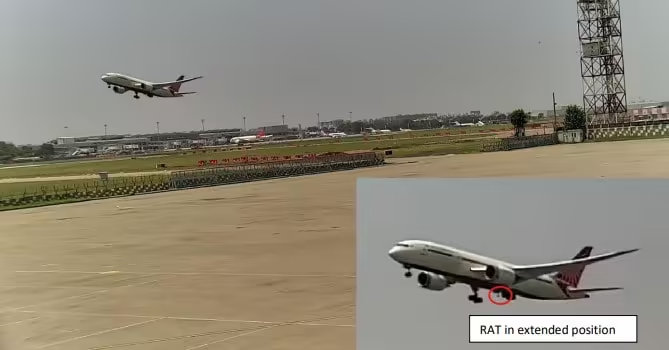Inside the Tragic Air India Flight 171 Crash: Engines Shut Down Mid-Air
- July 12, 2025
- 0

On June 12, Air India Flight 171, a Boeing 787-8 Dreamliner, departed from Ahmedabad’s Sardar Vallabhbhai Patel International Airport at 1:39 pm, heading for London Gatwick. Tragically, within just 32 seconds of takeoff, the aircraft crashed into a medical hostel near the airport. This catastrophic event resulted in the deaths of 241 out of the 242 passengers and crew on board, along with 19 individuals on the ground. The sole survivor was a British-Indian man seated in row 11A. This incident marked the first fatal crash involving a Boeing 787 since its introduction to commercial aviation in 2011.
The Aircraft Accident Investigation Bureau (AAIB) released a probe report last night, highlighting several possibilities and raising numerous questions about what occurred on the doomed flight. Data from the aircraft’s Enhanced Airborne Flight Recorder (EAFR) revealed that Flight 171 executed a routine takeoff, reaching an airspeed of up to 180 knots. Despite clear skies and favorable weather conditions, both engines unexpectedly lost thrust when their fuel control switches moved from “RUN” to “CUTOFF” within a second of each other.
The cockpit voice recorder captured a brief but crucial exchange between Captain Sumeet Sabharwal and First Officer Clive Kunder. As the engines failed, one pilot questioned why the fuel was cut off, to which the other replied that they did not initiate it. This conversation is central to the investigation as it explores whether human error, mechanical failure, or external factors led to the switch movement.
Despite the rapid engine shutdowns, the pilots acted quickly to restore fuel flow by moving the switches back to “RUN.” Engine 1 began recovering, but Engine 2 continued to decelerate. The Ram Air Turbine (RAT) deployed automatically but could not provide thrust. With limited altitude for recovery, Flight 171 struck the hostel at 1:39:32 pm, causing a devastating fireball.
The AAIB’s preliminary report examines three main theories: human action, mechanical failure, and external factors affecting fuel flow. The report rules out sabotage and bird strikes while noting that no immediate evidence supports these theories. The investigation continues to focus on understanding why both fuel control switches moved simultaneously.